Tiara and scandals: The 'Dancing Marquess' of Anglesey
- Published
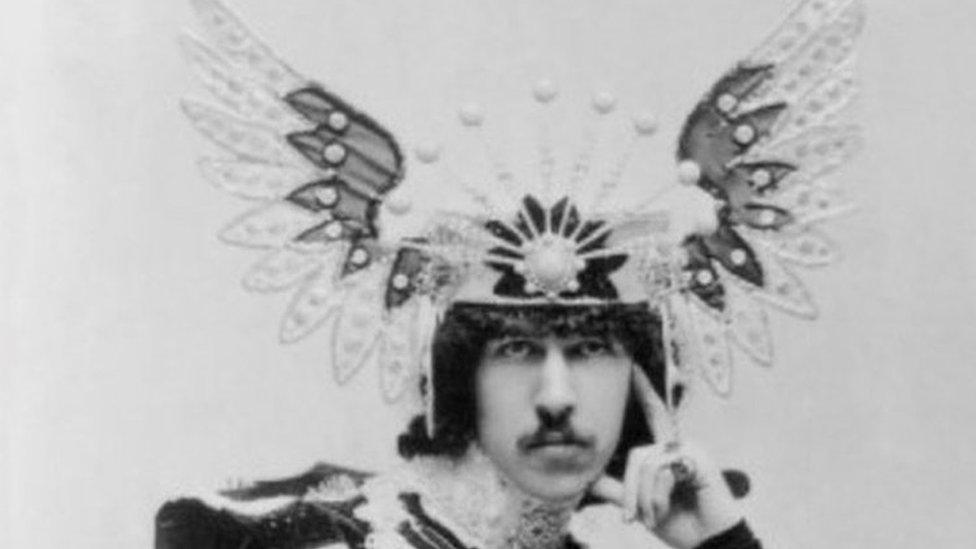
The fifth Marquess of Anglesey: The "Elton John" of Edwardian high society
A diamond tiara that once belonged to one of Britain's most extravagant aristocrats is up for sale on Saturday at a prestigious European art fair.
The Anglesey Tiara was at one time owned by Henry Cyril Paget - fifth Marquess of Anglesey.
It is expected to fetch a six-figure sum at the event in the Netherlands.
But behind the jewel-encrusted treasure lies a story of squandered wealth, Edwardian scandal, and an accusation of "erasing Welsh queer history".
The tiara dates from about 1890, and was left to Paget in 1898 on the death of his father.
At the same time, he acquired the family title, and family estates in Staffordshire, Dorset, Anglesey and Derbyshire.
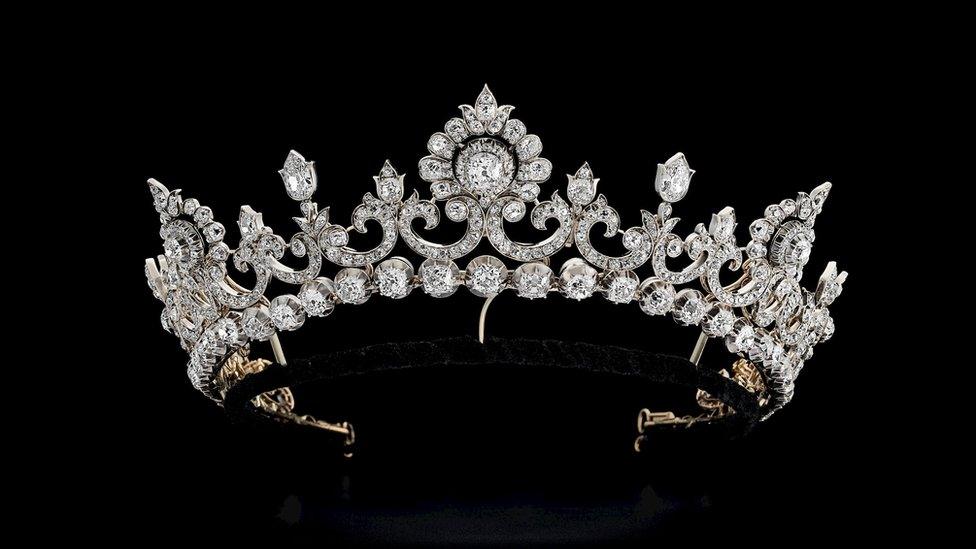
The Anglesey Tiara is going on view at The European Fine Art Fair in Maastricht, Netherlands
He also inherited wealth - fabulous wealth.
The fourth marquess left the 20-something Paget an estate worth £535,000 - equivalent to about £60m today.
In addition, the family homes and estates generated an annual income of £120,000 - worth some £13m in 2020.
But in the space of just over five years, the marquess had blown the lot, been declared bankrupt, and died from complications of tuberculosis in Monte Carlo.
Newspapers in March 1905 declared his death a "wasted life".
The Times obituary said: "The news of Lord Anglesey's death was received at Bangor with much regret, as Lord Anglesey, despite his peculiarities, was much liked there."
Peculiarities?
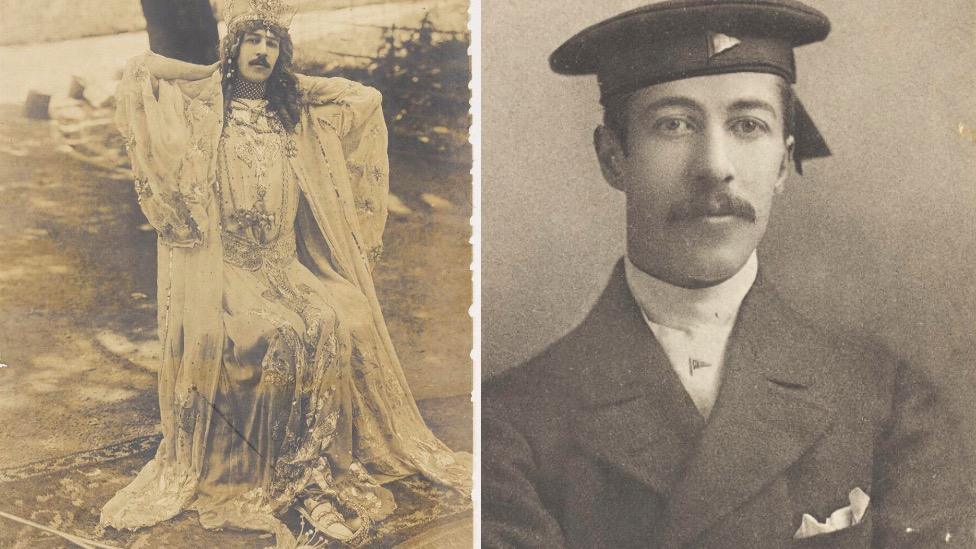
Dressing-up: Paget spent millions on outfits for stage and entertaining
Some would certainly view the Eton-educated Lord Anglesey as embodying the word eccentric.
He had married his cousin Lillian Chetwynd in the January of 1898 before inheriting his new title.
But even then, he displayed a magpie-like obsession with all that glittered, reputedly buying the entire contents of a Paris jewellery shop to adorn his new bride.
His continued extravagance led to his wife petitioning for divorce in 1900 - with the marriage annulled, reportedly due to non-consummation.
Then in another twist, the annulment was withdrawn at the request of Lady Anglesey - though they remained estranged.
Effectively freed from marriage, Paget continued to throw himself into the loves of his life - spending and theatre.
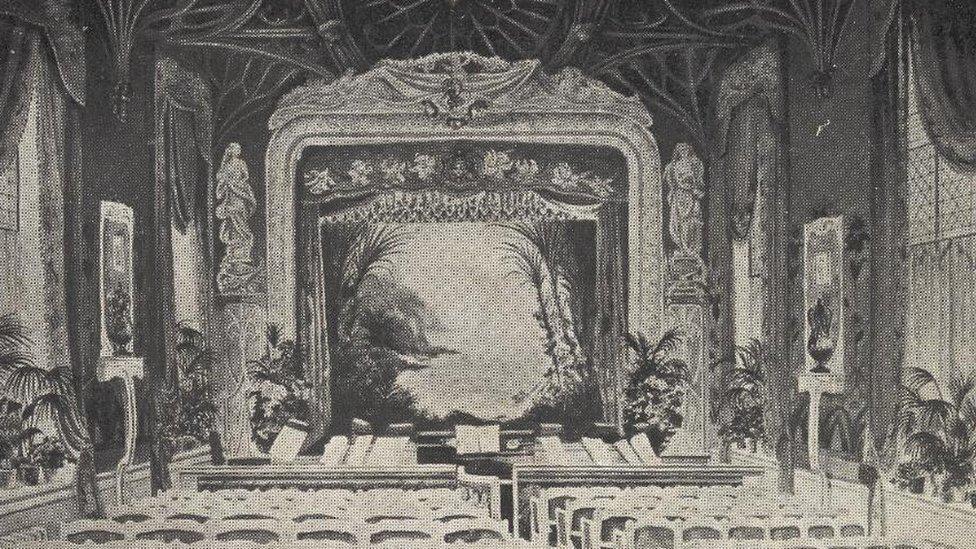
The Gaiety was a replica of another theatre in Dresden, Germany
He renamed the family estate near Llanfairpwll on Anglesey from Plas Newydd to Anglesey Castle.
The family chapel was gutted and replaced by a 150-seat theatre.
He then hired a professional theatre company, and set about putting on pantomimes and plays for all to see - for free.
Playing centre stage in every performance was Paget, who became known as "The Dancing Marquess" by the newspaper gossip sheets.
He used every show to put on a "butterfly dance" display, adorned by costumes which would literally cost millions of pounds today.
"He didn't understand the concept of costume jewellery - he thought it all had to be real," explained actor and writer Seiriol Davies, who wrote and performed an acclaimed musical show based on the life of the marquess.
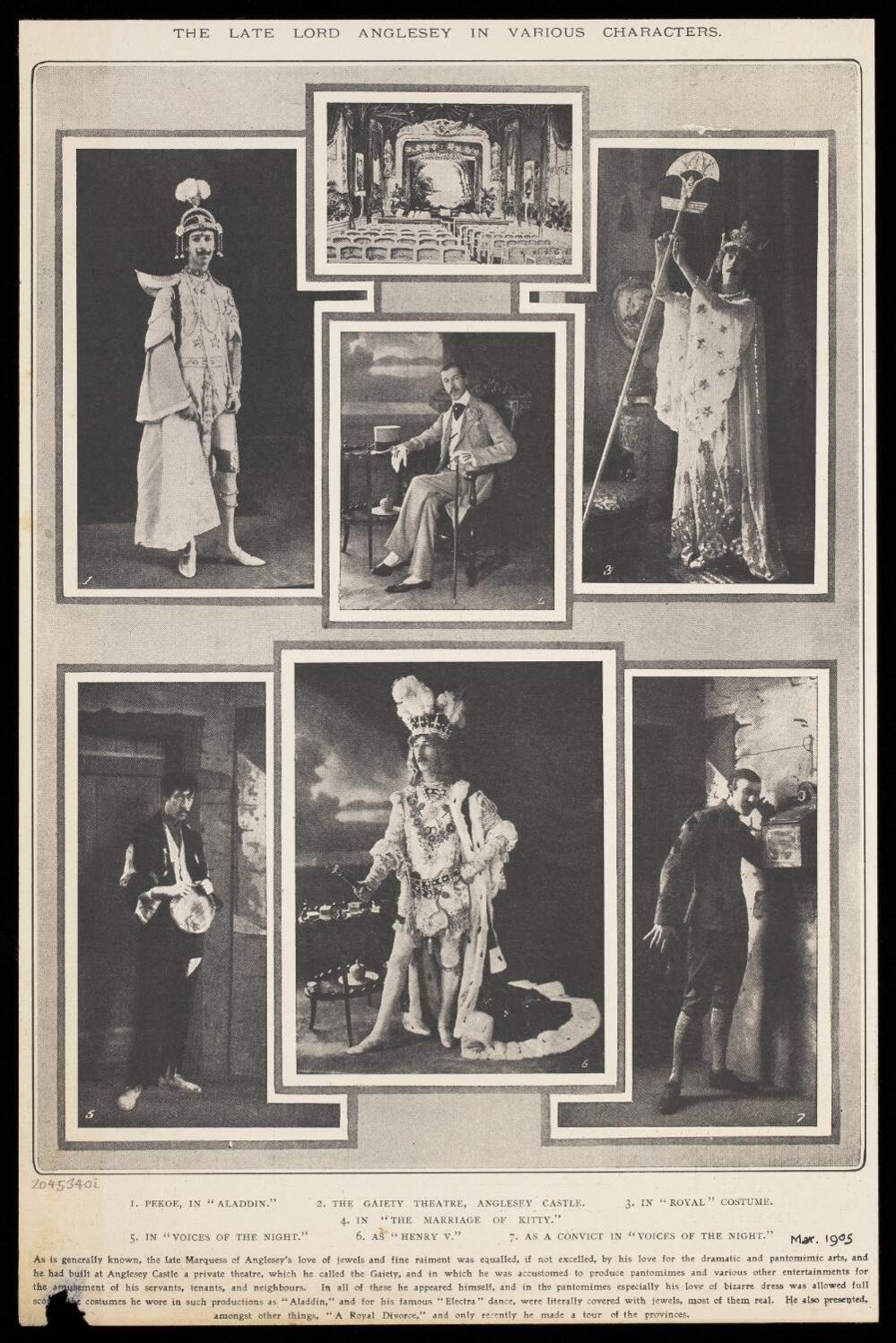

Some estimate a diamond-encrusted costume for the pantomime Aladdin was worth at least £10,000 at the time - or an eye-popping £1m at current prices.
"That costume was worth more than the house - and it was just left in a dressing room and somebody nicked it - and he had another one made," added Davies.
An occupational hazard for the marquess, it would appear.
His French valet was jailed in 1901 for stealing what would be worth the equivalent today of £2m in jewels.
A year later, a British detective disguised as Paget arrested a gang in a Parisian cafe trying to sell some of the booty - including a pear-shaped pearl worth £1.2m alone, if valued today.
The list of Paget's extravagance went on and on.
"He bought a car that converted the exhaust fumes into rose-scented perfume, he had a fleet of poodles. He made a ping-pong jacket and wanted it to be green - so he made it out of real emeralds," added actor Davies.
Records for one of his cars show it was modelled on a Pullman train carriage, with revolving armchairs, tables, cabinets and solid silver fittings - at the bargain price of £2,500 - or just £265,000 if you could afford it today.
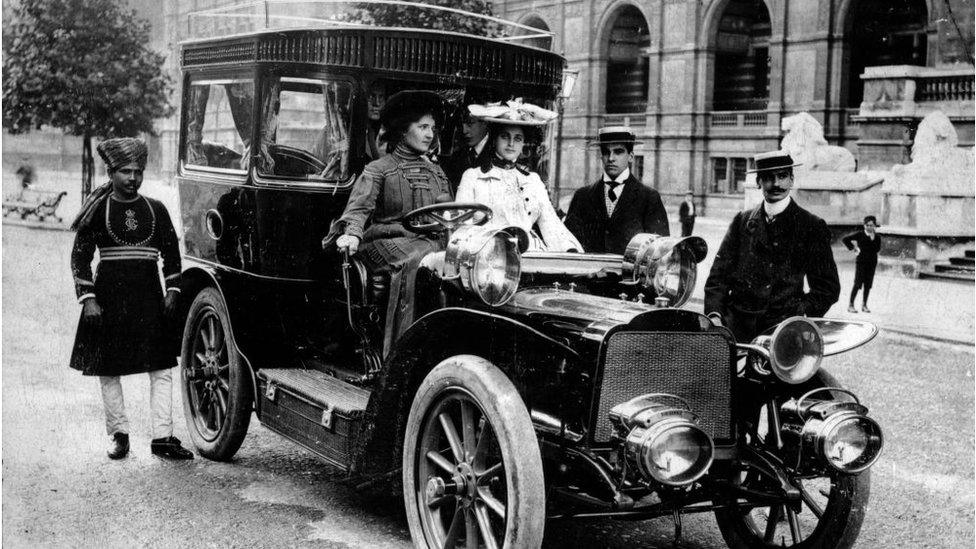
One of Paget's cars - he was renowned for "driving furiously" and was once fined the equivalent of £500 for speeding
The spending continued unabated - until the inevitable happened. Paget ran out of money.
In the summer and autumn of 1904, bankruptcy proceedings were started against him.
He had debts of about £560,000 - or almost £60m in 2020.
Trustees were appointed to run his estates - and then began 40 days of auctions selling off all the items he had collected over the previous five years.
One day alone was set aside to sell his collection of dogs - from poodles to collies.
Another day saw 900 lots of silk-lined suits and fur coats put under the hammer.
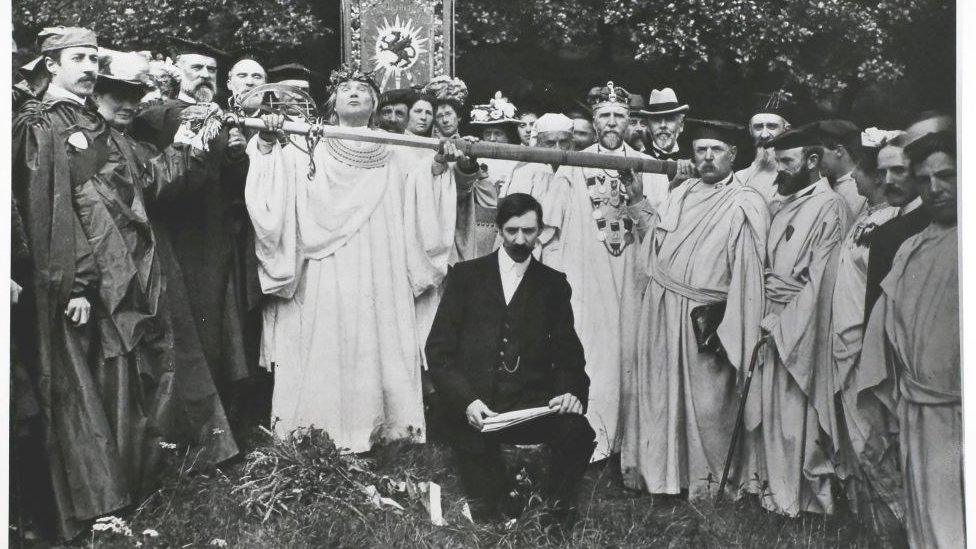
Paget - on the left - was president of the National Eisteddfod in Bangor in 1902, and a member of the Gorsedd of Bards, with the name "Cadrawd Hardd" - "Beautiful Cadrawd"
He departed for a new life in France on what he would have viewed as a meagre allowance of £2,000 a year. Today, that translates to roughly £210,000 a year.
He told a French journalist: "In six years, I have run through that fortune, just how - I could not tell you."
Perhaps his £3,000-a-year bill for underwear revealed the extent of his spending problems.
"I had braces woven of threads of gold instead of the usual elastic webbing that other men rely upon to support their trousers," he said.
"The buckles were of gold too... It is not hard to see where a good deal of my money went."
His travels took him to Monte Carlo, where one newspaper pronounced he had invented a new gambling system to take on the casinos and hoped to break the bank.
But on 14 March, 1905, it was there he succumbed to TB-induced pneumonia and died. He was just 29.

Within months of his death - his "Anglesey Castle" home was again called Plas Newydd
Newspapers bleakly stated there were no family members to greet his coffin when it returned to the UK - or even at the station on Anglesey ahead of a strictly private funeral.
As an only child, his title was inherited by his cousin Charles Henry Alexander Paget.
By August of the same year, his beloved theatre at Anglesey Castle had been removed and was once again a chapel.
In fact, almost every trace that Paget had been the fifth marquess disappeared.
The family estate was once again named Plas Newydd.
His letters, diaries and papers were set alight and destroyed by the family.
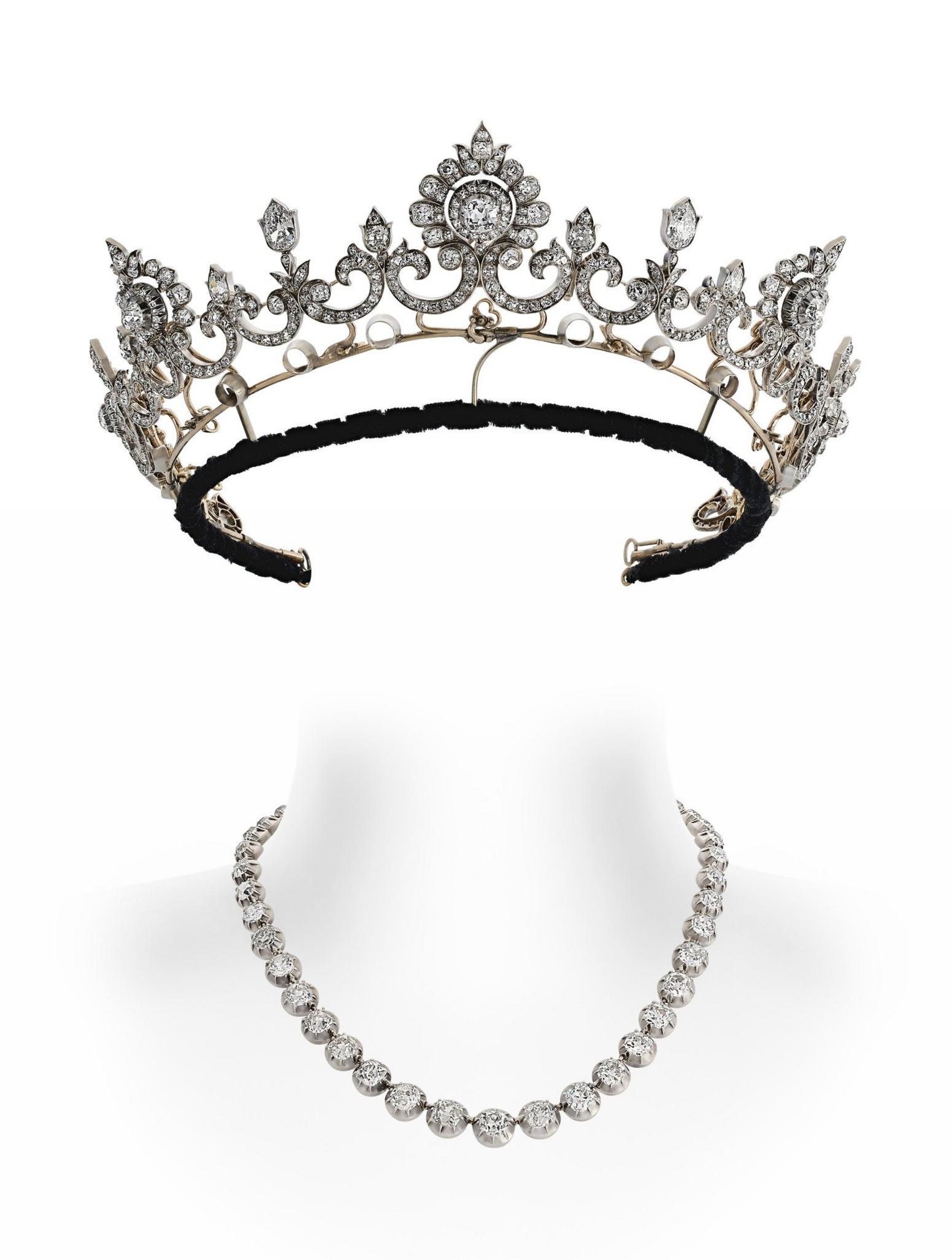
The Anglesey Tiara was one of Paget's few possessions not sold off to pay debts - and was inherited by the sixth marquess

His musical stage biographer Seiriol Davies said the Victorian and Edwardian values of high British society acted against the fifth marquess.
There was also the elephant-in-the-room - perceptions about his sexuality.
While there is no concrete evidence to pinpoint he ever had same-sex relationships, Davies said the hints of a queer identity were there.
"He put on touring productions of an Oscar Wilde play, that would have been quite daring in that period," said Davies.

Seiriol Davies recreated one of Paget’s most outlandish costumes for his show How To Win Against History
It was only a few years since Wilde himself was jailed for gross indecency, before he died in Paris in 1900.
"It's not just a story about a whacky man who splashed money up the wall - it's also about a man who was erased from history," said Davies.
"Queer history is erased."

Cover star: The full extraordinary image of Paget was used by the National Trust

In 2017, the National Trust - who are guardians of Plas Newydd, external - featured John Wickens's iconic image of Paget to examine its own LGBTQ+ history, and that of the properties and those who lived there.
Now the tiara - one of the few items not sold off to pay debts - is being put up for sale by the family exactly 115 years after his death.
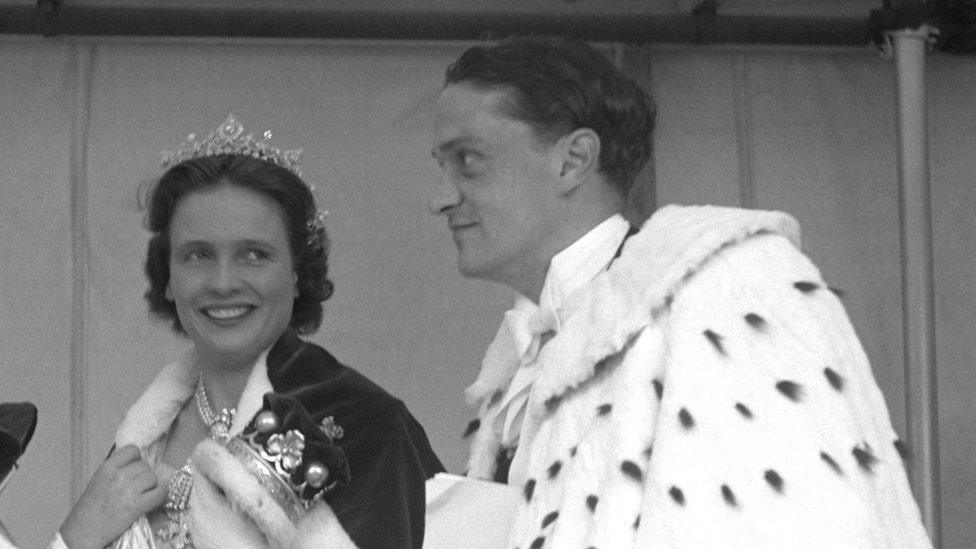
1952: Marjorie Paget, Marchioness of Anglesey, is pictured here with the sixth marquess, wearing the tiara at the Queen's coronation
"If jewels could talk, this tiara would have a fascinating story to tell. It was undoubtedly worn by the Marquess in his productions," said Guy Burton, from Hancocks London, who are exhibiting the tiara at the Maastricht exhibition.
"This is a unique piece in every way."
Unique - just like Henry Cyril Paget.
- Published23 April 2018

- Published16 July 2013
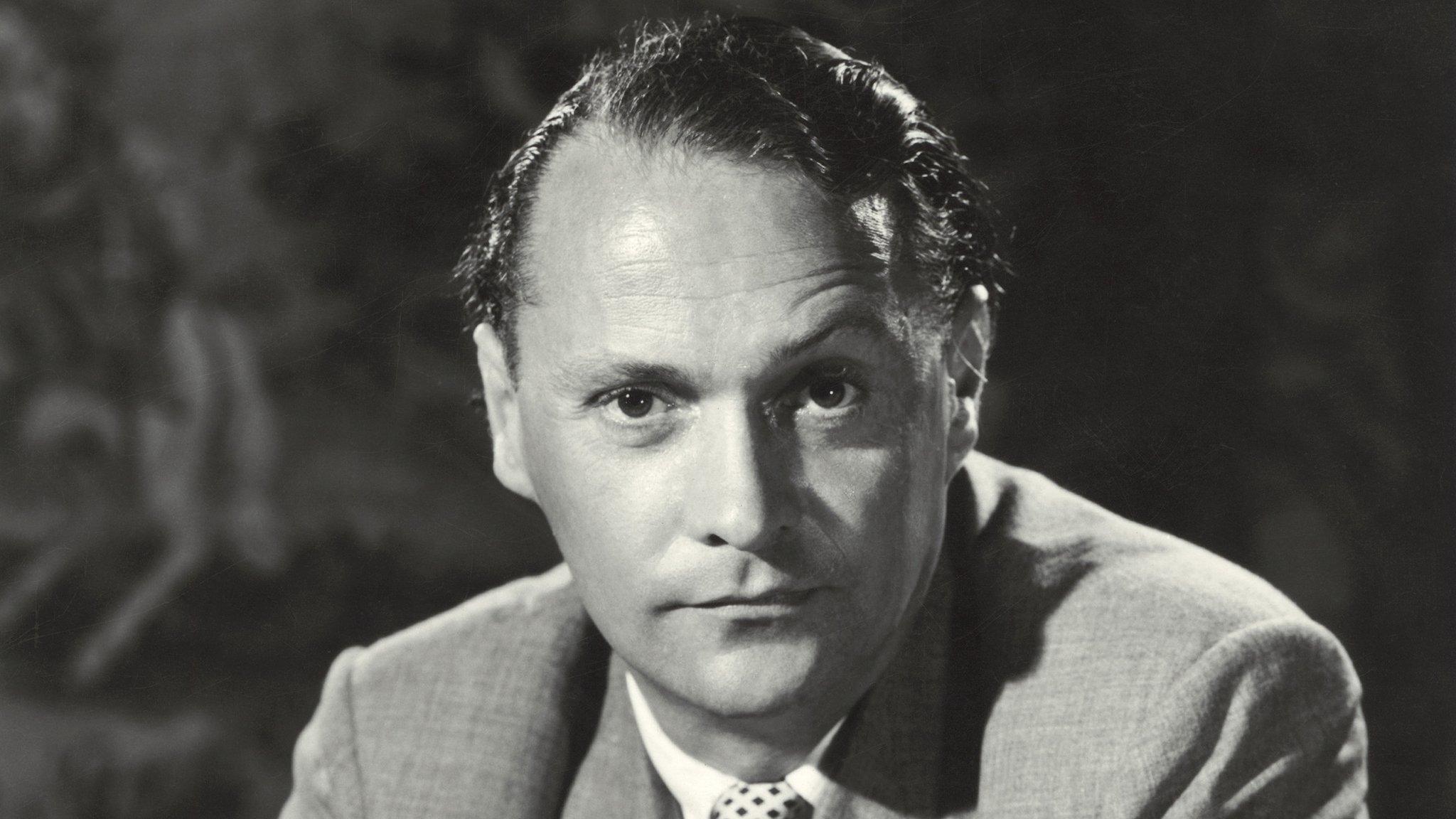
- Published22 May 2014
